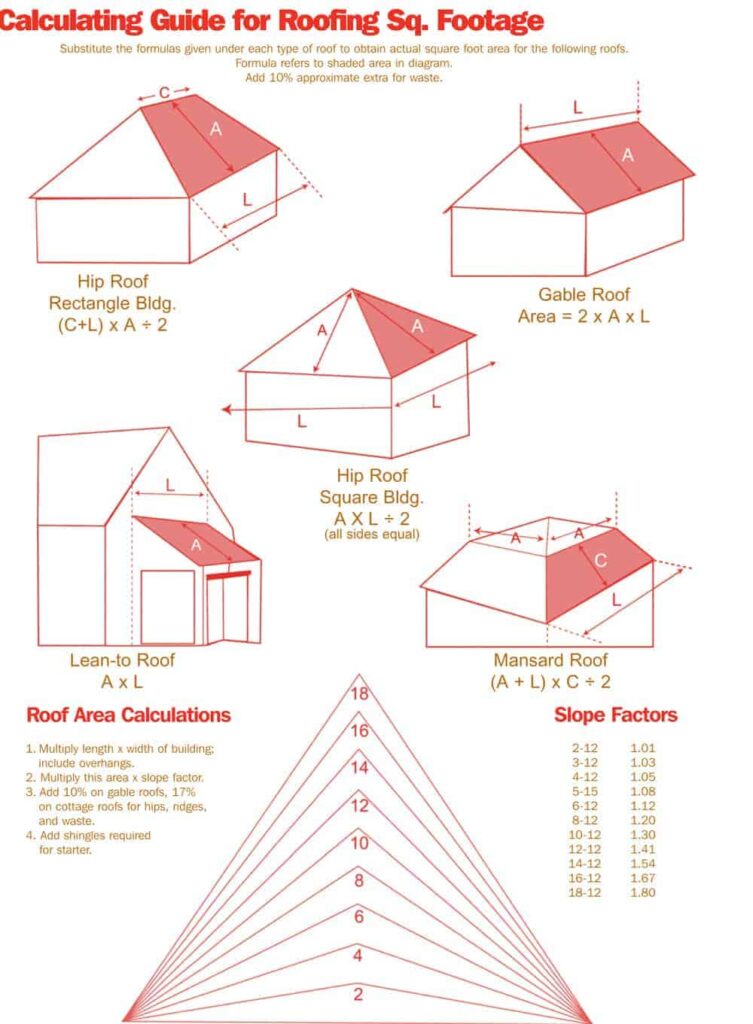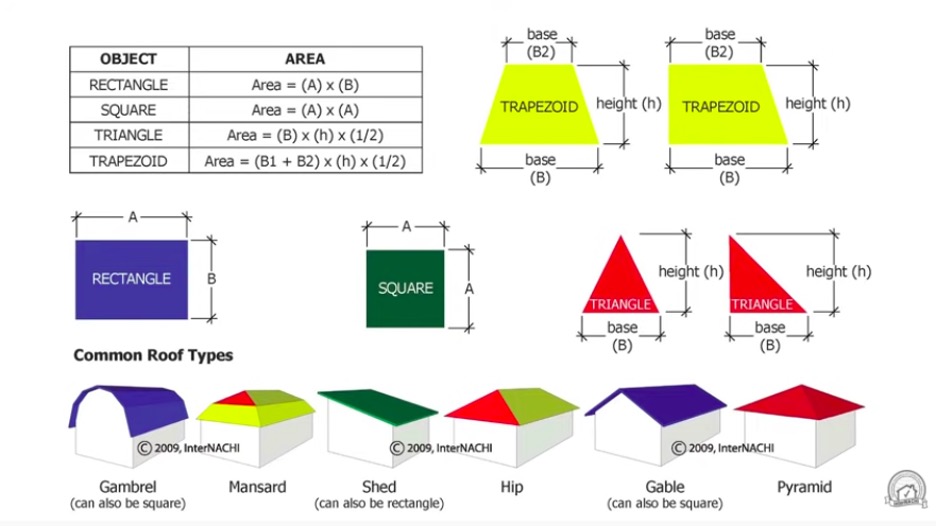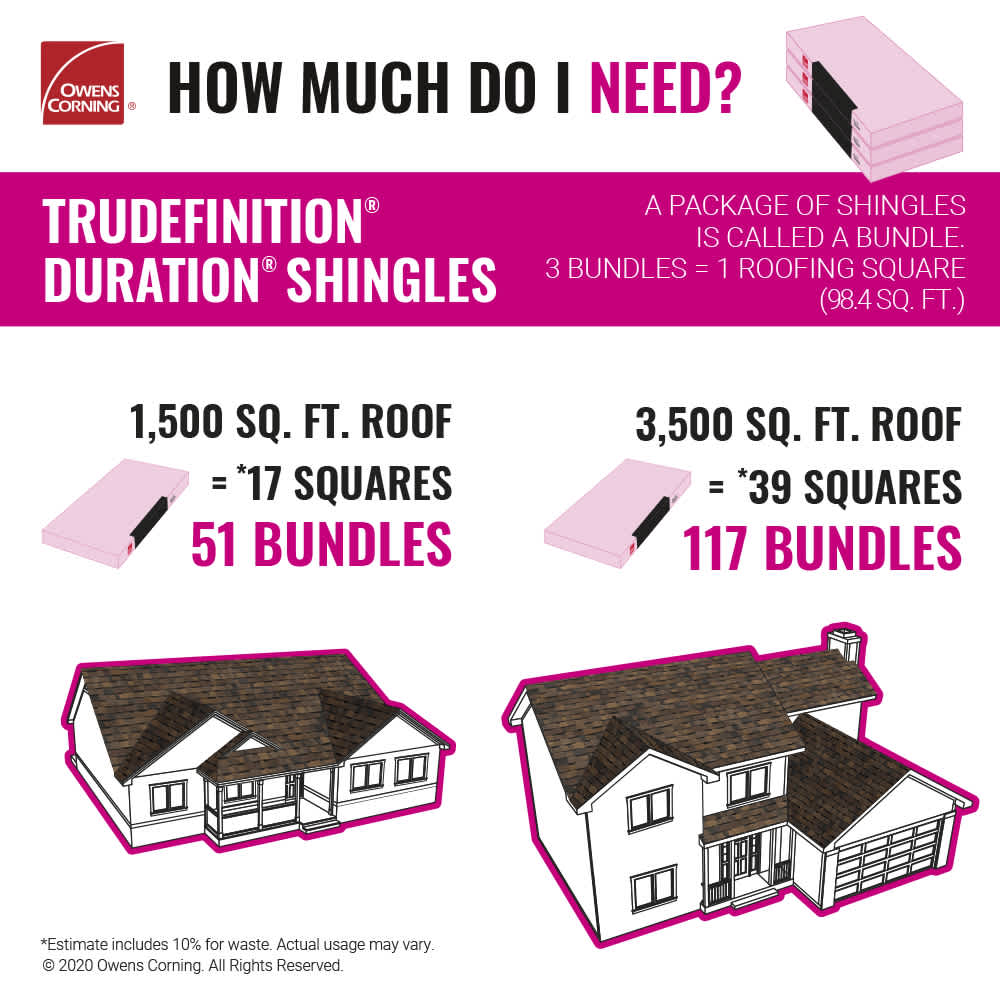Have you ever wondered how many square feet is considered to be a normal size for a roof? Whether you’re a homeowner looking to replace your current roof or simply curious about the average size, understanding the dimensions of a typical roof can be helpful. In this article, we will explore the standard square footage of a normal roof, providing you with valuable insights and information. So, let’s get started and uncover the mysteries behind roof sizes!

Factors that Determine Roof Size
Roof Pitch
The pitch of a roof refers to the angle or slope of the roof. Roof pitch is a significant factor in determining the size of a roof, as it affects the area that needs to be covered. Steeper roofs generally require more roofing material and have a larger surface area than roofs with a lower pitch.
Shape of the Roof
The shape of the roof has a direct impact on its size. The more complex and irregular the shape, the larger the roof area will be. Roofs with multiple angles, dormers, valleys, and gables typically have larger surface areas compared to simple, rectangular roofs.
Number of Stories
The number of stories in a building also affects the size of the roof. A multi-story building will have a larger roof area compared to a single-story structure, as it needs to cover the entire footprint of each level.
Complexity of Design
Roofs with intricate designs, such as multiple levels, turrets, and unique architectural features, tend to have larger surface areas. The more complex the design, the more materials are required to cover and protect the roof, resulting in a larger roof size.
Local Building Codes
Local building codes play a crucial role in determining the minimum requirements for roof size in a specific area. These codes often specify the minimum pitch, overhangs, and other regulations that impact roof size. It is important to consult local building codes to ensure compliance and avoid any legal issues during construction or renovation.
Common Roof Sizes by House Type
Single-Family Homes
The average size of a roof on a single-family home typically ranges from 1,500 to 3,000 square feet. However, this can vary depending on the size of the house, architectural design, and local building codes. Single-family homes may have various roof shapes, such as gable, hip, or flat roofs.
Multifamily Homes
Roof sizes for multifamily homes, such as townhouses, duplexes, or apartment complexes, vary based on the number of units and the overall footprint of the building. The size can range from a few thousand square feet to several tens of thousands of square feet, depending on the size and complexity of the structure.
Commercial Buildings
Commercial buildings, including offices, retail spaces, and warehouses, often have expansive roof areas due to their larger footprint. The size of commercial roofs can vary significantly, with some buildings having roof sizes in the tens of thousands or even hundreds of thousands of square feet.
Industrial Buildings
Industrial buildings, such as factories and manufacturing facilities, typically have large roof areas to accommodate their substantial operations. Roof sizes for industrial buildings can range from thousands to millions of square feet, depending on the size of the facility and its specific requirements.
Public Buildings
Public buildings, such as schools, hospitals, and government buildings, have varying roof sizes depending on their size, design, and purpose. Some public buildings may have extensive roof areas to accommodate features like skylights, solar panels, or HVAC systems, while others may have more modest roof sizes.

Average Roof Sizes by Material
Asphalt Shingles
Asphalt shingles are one of the most common roofing materials used in residential construction. The average roof size for asphalt shingles ranges from 1,500 to 3,000 square feet for single-family homes. However, the specific size can vary based on factors like building design, roof pitch, and style of the shingles.
Metal Roofing
Metal roofing is known for its durability and longevity. The average roof size for metal roofing can range from 1,500 to 4,000 square feet for single-family homes. Metal roofs can be installed in various styles and profiles, such as standing seam, corrugated panels, or metal tiles, which can affect the overall roof size.
Clay or Concrete Tiles
Clay or concrete tiles are often used in Mediterranean or Spanish-style architecture. The average roof size for clay or concrete tiles ranges from 2,000 to 5,000 square feet for single-family homes. The large size of the tiles and the overlap required for installation contribute to the larger roof area.
Slate Roofing
Slate roofing is known for its elegance and durability. The average roof size for slate roofing can range from 2,000 to 6,000 square feet for single-family homes. Slate tiles are generally larger and heavier than other roofing materials, resulting in a larger roof area.
Wood Shake or Shingles
Wood shakes or shingles provide a natural and rustic aesthetic to a roof. The average roof size for wood shake or shingles ranges from 1,500 to 3,500 square feet for single-family homes. The size and thickness of the shakes or shingles can impact the overall roof size.
Cost Implications of Roof Size
Roofing Installation Costs
The size of the roof directly affects the cost of installation. Larger roofs require more materials, labor, and time to install, resulting in higher installation costs. It is important to consider the size of the roof when estimating the overall cost of a roofing project.
Roofing Material Costs
The size of the roof also influences the cost of roofing materials. Larger roofs require more shingles, tiles, or other materials to cover the entire surface area. The price per square foot of roofing material multiplied by the roof size determines the material cost.
Maintenance and Repair Costs
The size of the roof can impact the cost of maintenance and repairs over time. Larger roofs may require more frequent inspections, repairs, and maintenance, increasing the overall cost of roof maintenance. It is essential to include these potential costs when budgeting for a roofing project.
Roof Size Estimates based on Square Footage
Small-Sized Roof
A small-sized roof typically ranges from 1,000 to 1,500 square feet for single-family homes. These roofs are common in small cottages, bungalows, or tiny houses. It is important to note that the specific size may vary based on the design, roof pitch, and local building codes.
Medium-Sized Roof
A medium-sized roof typically ranges from 1,500 to 3,500 square feet for single-family homes. This size is common in average-sized houses and can accommodate various roof shapes and designs.
Large-Sized Roof
A large-sized roof typically ranges from 3,500 to 6,000 square feet for single-family homes. These roofs are often found in larger, custom homes or properties with extensive architectural features.
Estimating Roof Size for Replacement
When replacing an existing roof, it is crucial to accurately estimate the size of the roof. This can be done by measuring the square footage and accounting for any changes in roof features or design since the original installation. Hiring a professional roofing contractor can help ensure accurate measurements and estimates.
Factors Influencing Roof Size
Local Climate
The local climate has a significant influence on roof size. Areas with heavy rainfall, high snow loads, or frequent storms may require larger roofs with more slope to efficiently shed water and snow. On the other hand, regions with mild climates may allow for smaller roofs with less slope.
Building Design
The design of the building greatly impacts the size of the roof. Buildings with multiple levels, complex shapes, or architectural features like dormers or skylights often have larger roof areas compared to simple, rectangular structures.
Roofing Material Considerations
Different roofing materials have unique installation requirements and may impact the size of the roof. Some materials, such as clay tiles or slate, may overlap more, resulting in a larger roof area. It is important to consult with a roofing professional to determine the specific impact of materials on roof size.
Energy Efficiency and Insulation
Energy efficiency and insulation requirements can affect roof size. Depending on local building codes and energy efficiency standards, additional layers of insulation or cool roofing materials may be required, increasing the thickness and size of the roof.
Aesthetic Preferences
Homeowners’ aesthetic preferences can also influence roof size. Some architectural styles, such as Victorian or Colonial, often feature larger and more elaborate roofs to enhance their visual appeal. Individual preferences for roof slope, overhangs, or roof features can also impact the overall roof size.

Roof Size and Longevity
Roof Lifespan Estimates
The size of the roof does not directly impact its lifespan. The lifespan of a roof primarily depends on the quality of materials used, the installation process, and regular maintenance. However, larger roofs may be more susceptible to damage from severe weather conditions, leading to potential issues that could shorten the roof’s lifespan.
Factors Affecting Roof Longevity
Certain factors can affect the longevity of a roof, regardless of its size. These factors include exposure to severe weather, proper ventilation, regular maintenance, and the use of high-quality materials. It is essential to address these factors to maximize the lifespan of any roof, regardless of its size.
Maintenance and Care
Regular maintenance and care are crucial for ensuring the longevity of a roof. This includes routine inspections, gutter cleaning, removal of debris or moss, and timely repairs. Larger roofs may require more frequent and extensive maintenance due to their size, so it is important to establish a regular maintenance schedule.
Roof Size and Energy Efficiency
Cool Roofing Systems
The size of the roof can impact its energy efficiency. Cool roofing systems, which are designed to reflect sunlight and reduce heat absorption, can help lower energy costs. The larger the roof, the more significant the potential energy savings, as a larger surface area can reflect more heat.
Roof Insulation
Roof insulation plays a vital role in improving energy efficiency. A larger roof requires more insulation materials to meet energy codes and minimize heat transfer. Proper insulation can help maintain a comfortable indoor temperature and reduce the load on heating and cooling systems.
Ventilation and Air Circulation
The size of the roof can affect ventilation and air circulation within a building. Properly ventilated roofs help prevent moisture buildup, reduce heat retention, and improve overall indoor air quality. Larger roofs may require additional ventilation measures to ensure effective air circulation.

Building Codes and Roof Size Regulations
Local Building Codes
Local building codes dictate the minimum requirements for roof size, pitch, and other construction specifications. It is crucial to consult these codes to determine the allowable size and design parameters when planning a roofing project. Failure to comply with building codes can result in legal issues and complications during construction or renovations.
Zoning Regulations
Zoning regulations may also impact roof size. Some areas have restrictions on the height or size of buildings, which can indirectly affect the size and design of the roof. It is important to research and understand zoning regulations to ensure compliance when designing or modifying a roof.
Permitting Requirements
In many jurisdictions, obtaining permits for roofing projects is mandatory. Permitting requirements often include a review of the proposed roof size, design, and structural components. It is essential to obtain the required permits before starting any roofing construction to ensure compliance with local regulations.
Legal Restrictions on Overhangs
Roof overhangs, which provide additional protection and shade, may be subject to legal restrictions. Local building codes or zoning regulations may specify the maximum allowable overhang size to maintain structural integrity and prevent encroachments on neighboring properties.
Calculating Roof Size
Measuring Roof Area
To calculate the size of a roof, measure the length and width of each plane or section of the roof separately. Multiply the length by the width to obtain the area of each section, and then sum up the areas of all sections to determine the total roof area. It is important to measure all sections accurately and account for any roof features or irregular shapes.
Accounting for Roof Features
Roof features, such as dormers, valleys, or skylights, can affect the overall roof size. These features may require additional materials or alterations to the roof shape, resulting in a larger roof area. Carefully measure and account for all roof features when calculating the roof size.
Professional Roof Assessments
For accurate and precise measurements, it is recommended to seek professional assistance. A licensed roofing contractor or a certified roof inspector can provide expert assessment and measurement of the roof size. Professional roof assessments ensure accurate calculations and help avoid any errors or miscalculations during the planning or construction phase.
In conclusion, the size of a roof is influenced by several factors including roof pitch, shape of the roof, number of stories, complexity of design, and local building codes. Different house types, such as single-family homes, multifamily homes, commercial buildings, industrial buildings, and public buildings, have varying roof sizes. The choice of roofing material also impacts the roof size, and the cost implications of roof size encompass installation, material, and maintenance costs. Factors like local climate, building design, roofing materials, energy efficiency, and aesthetic preferences also influence roof size. Roof size doesn’t directly impact longevity, but it can affect energy efficiency and comply with building codes and regulations. Calculating roof size requires measuring the roof area, accounting for roof features, and considering professional roof assessments to ensure accuracy.
